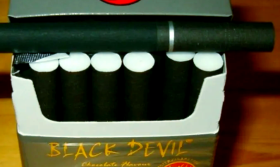How Tobacco Use Triggers Excessive Skin Oil Secretion
Introduction
Tobacco use is widely known for its detrimental effects on respiratory and cardiovascular health. However, its impact on skin health, particularly in causing excessive oil secretion, is often overlooked. Research indicates that smoking disrupts the skin’s natural balance, leading to increased sebum production, clogged pores, and a higher risk of acne and other dermatological issues. This article explores the mechanisms behind tobacco-induced oily skin, its consequences, and potential solutions.
The Link Between Tobacco and Sebum Production
1. Nicotine and Sebaceous Gland Stimulation
Nicotine, the primary addictive component in tobacco, influences the endocrine system by increasing cortisol levels—a stress hormone. Elevated cortisol triggers the sebaceous glands to produce more sebum (oil). Overproduction of sebum clogs pores, leading to acne, blackheads, and an overall greasy complexion.
2. Oxidative Stress and Skin Barrier Damage
Tobacco smoke contains thousands of harmful chemicals, including free radicals that induce oxidative stress. This weakens the skin’s protective barrier, forcing the sebaceous glands to compensate by secreting more oil to maintain moisture. The result is an oily yet dehydrated skin texture.

3. Reduced Blood Circulation and Skin Cell Renewal
Smoking constricts blood vessels, reducing oxygen and nutrient supply to skin cells. Poor circulation slows down skin cell turnover, causing dead skin cells to accumulate and mix with excess sebum. This creates a breeding ground for acne-causing bacteria.
Consequences of Tobacco-Induced Oily Skin
1. Increased Acne and Breakouts
Excess sebum combines with dead skin cells, trapping bacteria (like Propionibacterium acnes) inside pores. This leads to inflammatory acne, whiteheads, and blackheads.
2. Premature Aging and Uneven Skin Tone
While oily skin might seem resistant to wrinkles, tobacco-induced oxidative stress accelerates collagen breakdown. Smokers often experience premature aging alongside persistent oiliness, resulting in a dull, uneven complexion.
3. Larger Pores and Skin Congestion
Chronic overproduction of sebum stretches pores, making them appear larger. Clogged pores also lead to persistent skin congestion, making it difficult to maintain a clear complexion.
How to Combat Tobacco-Related Oily Skin
1. Quit Smoking
The most effective solution is to quit tobacco use. Studies show that skin oil production normalizes within weeks of cessation as hormone levels stabilize.
2. Adopt a Proper Skincare Routine
- Cleanse Gently: Use a sulfate-free, oil-balancing cleanser to remove excess sebum without stripping the skin.
- Exfoliate Regularly: Salicylic acid or glycolic acid helps unclog pores and regulate sebum.
- Hydrate with Non-Comedogenic Products: Lightweight, water-based moisturizers maintain hydration without adding oil.
3. Antioxidant-Rich Diet and Supplements
Consuming foods high in vitamins C and E (citrus fruits, nuts, leafy greens) helps counteract oxidative damage. Omega-3 supplements may also regulate sebum production.
4. Professional Dermatological Treatments
- Chemical Peels: Help remove dead skin cells and reduce oiliness.
- Laser Therapy: Can shrink sebaceous glands and improve skin texture.
Conclusion
Tobacco use significantly disrupts the skin’s natural oil balance, leading to excessive sebum secretion, acne, and premature aging. While quitting smoking is the best solution, a targeted skincare regimen and healthy lifestyle changes can mitigate these effects. Understanding the connection between tobacco and oily skin empowers individuals to take proactive steps toward healthier skin.












